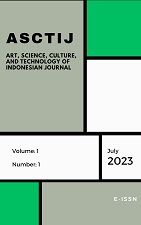Graffiti on the Development of Urban Arts: Study Case in Yogyakarta City
Abstract
Full Text:
PDFReferences
Triarso, “Ruang Terbuka Dalam Perancangan Kota,” Semarang, 2005.
M. İnceoğlu and A. Ayfer, “The Concept of Urban Space Quality,” Megaron, vol. 4, no. 3, 2009.
Urban Space as a Canvas for Civilian Expression, “Belén Maiztegui,” Arch Daily, Jul. 22, 2020. https://www.archdaily.com/944060/urban-space-as-a-canvas-for-civilian-expression
D. Carollina, “Pemanfaatan Sampah Spraycan sebagai Katalog Pameran ‘Voice of Wall 6 Hours Exhibition,’” Jurnal Bahasa Rupa, vol. 1, no. 1, pp. 35–42, Oct. 2017, doi: 10.31598/bahasarupa.v1i1.145.
W. Zhou, “The Application and Development of Mural Art in Urban Public Environment Landscape Design,” J Environ Public Health, vol. 2022, pp. 1–9, Oct. 2022, doi: 10.1155/2022/3346648.
B. Maric, “The History of Street Art,” Widewalls, Jul. 29, 2014. https://www.widewalls.ch/magazine/the-history-of-street-art
T. Conklin, “Street Art, Ideology, and Public Space,” Portland, OR, Jan. 2000. doi: 10.15760/etd.761.
DOI: https://doi.org/10.24821/asctij.v1i1.10172
Refbacks
- There are currently no refbacks.






D1.png)